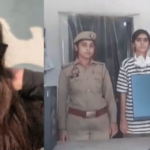Born in the urban estate of a Big town, 17-year-old, Mr. Surya is just like the any other youth of India. His parents brought him up very dedicatedly, patiently, and carefully. They actually left no stone unturned while looking after his education, providing health facilities, amusement options and a lot more. Being the only child to his parents, who are again the single children to their respective parents, it was Surya who has to look for the aging elders at his home, ultimately, which includes- four of his grandparents and two- his own parents.
Apart from carrying attributes like high intellectual capacity and decision-making skills, he was at the time highly ignorant to his elders, adamant by nature and least adjustive to the family. His parents were really concerned about his growing tough behaviour and carrying rudeness towards his responsibilities. While recalling the day he was born, his parents had found themselves fortunate enough to have the first child as male and likewise never felt a need to go for the option of the second child. Now, they are a solely dependent on their only child and quite nervous about their future life.
Such types of tales are not confined to Surya’s family only but belong to many households across India.
Rapidly increasing population in last century had occurred as a serious issue to the Government and for the developing country like India- Higher Population appears as a burden on its resources, be it- water, fresh air, land, food, minerals, housing, jobs and more. Worldwide, in terms of population size wise, India is currently in the second place, preceded by its neighbour country China. After the last census in 2011, the population of India was counted as 1.23 crore, which, before crossing the next decade, has reached 1.33 crore.
Time to time, a number of steps/ initiatives have been taken up by the government, civil societies, NGOs etc. to put a check on the rising population like- Formulation of National Population Policy, Family planning practices, One-Child Policy, etc. Although these initiatives have worked in the desirable direction and have taken us at a certain point yet with many aftermaths. At present, the growth rate of population in India is 1.1%. Of course, this is what we approached for, to control the demographic dividend and to ensure better welfare services to all. But are we sure of where we all are heading to?
In fact, One Child Policy in India is dragging us towards a much darker period where the social consequences will be more and more severe and their repercussions will reverberate for generations to come. Perhaps, that’s what our neighbour country -China has already experienced and genuinely, in 2015, they had announced a major shift from their controversial one-child policy to two child policy. China had seen the social set back from their previous notorious one-child policy which was introduced nationally in 1979, with the idea to slow down the population growth rate. The abolition of the policy was done in the backdrop of shrinking labour workforce, rapidly aging population, unbalanced growth, disturbed social health of the country and numerous other issues.
In India too, we have reached 1.1% population growth rate and this has again taken the debate of population controlling measures at the forefront, especially, questioning the credibility of one-child policy across the nation. With the narrowing down of the family pyramid, India’s joint family structure has already been shaken up and we have moved towards the nuclear family structure. This, no doubt has killed the spirit of Big families and hence, family values which the children ought to learn from their uncles/aunts-’chacha-Chachi- , ‘bua-fufa’, ‘mausa-mausi’, grandparents, grandparents (maternal), cousins, relatives of the relatives and so on.
The intervention of the state in the family structure vis a vis reproductive rights of the people has hampered the mindset of people. However, initially it was needed but putting on regressive actions like- throwing people with extra children- out of job; not allowing them to contest elections, not provide access to welfare schemes like scholarship etc to the extra children have certainly tilted the psyche of Indian couples and made them bias in reproductive decision making. Now the Indian couples have made themselves satisfy with their only child, and two children when the first child is a baby girl. This has triggered for the unbalanced growth of society.
Government’s clampdown of births will grapple India in future- with the shortage of staff for armed forces, diminish the demographic dividend and decrease the stake of the Indian diaspora in taking high-end jobs across the world. (One must know that India is the only country in the world with a demographic dividend which means we are the only country where the number of workable population (15-59 age) is more than the dependent population (0-14, 59 age)). Moreover, the choice and number of childbearing differs class-wise, as observed that the economic well-off segment is more prone towards producing fewer children as compared to those who are economically poor. This has made the number of children inversely proportional to the symbol of social status, in the majority of Indian minds.
One child policy has also acted against women- whose consent and a stake in reproductive decisions is hardly counted in orthodox societies, and the blame, as well as burden, comes as whole to them. Even the patriarchal mindsets have resorted towards a higher rate of abortions, female infanticide and even abandoning female infants. This has brought the reproductive health of women at the vulnerable level and coercively hampered their rights Female-Infanticide- which apart from being a total unethical practice, is acting negatively towards the sex ratio in India. Even the shared household responsibility factor has hit the low along with rise in crime against women, girls and brought the existence of fairer sex at questionable place.
Apart from providing a balanced growth, and value-based family environment, having more than one child in a family keep themselves emotional and social connected and be there for each other in any sort of time. As seen in the above-stated case of Surya- the single child can hardly become the citizens with cooperative mindsets. Since they don’t learn to share toys, things, foods, living place and even feelings to their age-mates in the beginning days to the psychological development of their life, their later phases of life too bear the aftermaths of their isolated upbringing. The duty to provide a sister or a brother to the child lies with the parents, which will also help the child once the parents are not there for him. The child will learn to give and take love, execute responsibilities and understand the world around him more clearly. Additionally, the duty of upbringing of the child will also get relieved when another sibling is there to look after his/her brother/sister.
Ranging from Macro to Micro level, economic to political level; the one-child policy appears as a policy which is more of regressive nature than that of a progressive one. In the context of social and cultural settings of India, One-child policy is strictly not going to be ok. Our government and educated people must learn from the example of China and must not overstrain the implementation of One child Policy here. However, our policymakers must not resort to these coercive practices rather they should resort to persuasion and education vis-a-vis ensuring the improved quality life of the people here.
Ms. Minakshi Sehrawat










More Stories
That great monk who at a very young age gave something to the society which cannot be forgotten. Swami Darshananand
Is India, which launches big satellites, now trapped in the clutches of tombs?
If you convert by force or fraud, you will be imprisoned for 10 years. The whole story of Chhattisgarh law.